- Details
- Written by Gordon Prentice
The latest polling figures from Mainstreet Research (25 February) show support for Dawn Gallagher Murphy and Chris Ballard essentially frozen with a 4 to 5 point gap between them.
Without NDP and Green voters lending their support to Ballard on Thursday, Dawn Gallagher Murphy will be returned as Newmarket-Aurora’s MPP for the next four years.
It pains me to say it.
Machiavellian
I have never come across a candidate for public office who is so Machiavellian and so deeply flawed. Her own former employees denounce her as a fraud.
Indeed, Gallagher Murphy would have been in the dock this very morning at the Ontario Labour Relations Board had her former office manager, Teena Bogner, not settled her action against the MPP and signed a Non-Disclosure Agreement which buys her silence.
Gallagher Murphy’s acidic and unforgiving temperament would have been on full display.
Instead, we see a different version. A few days ago, speaking to the homelessness charity "Inn from the Cold" she promised money after the election:
“I am looking forward… coming on the other side of the election… making an announcement that will help finish the funding for that Inn from the Cold. So stay tuned to that great coming announcement.”
Why the dance of the seven veils?
Why didn’t she make the announcement before the election was called? 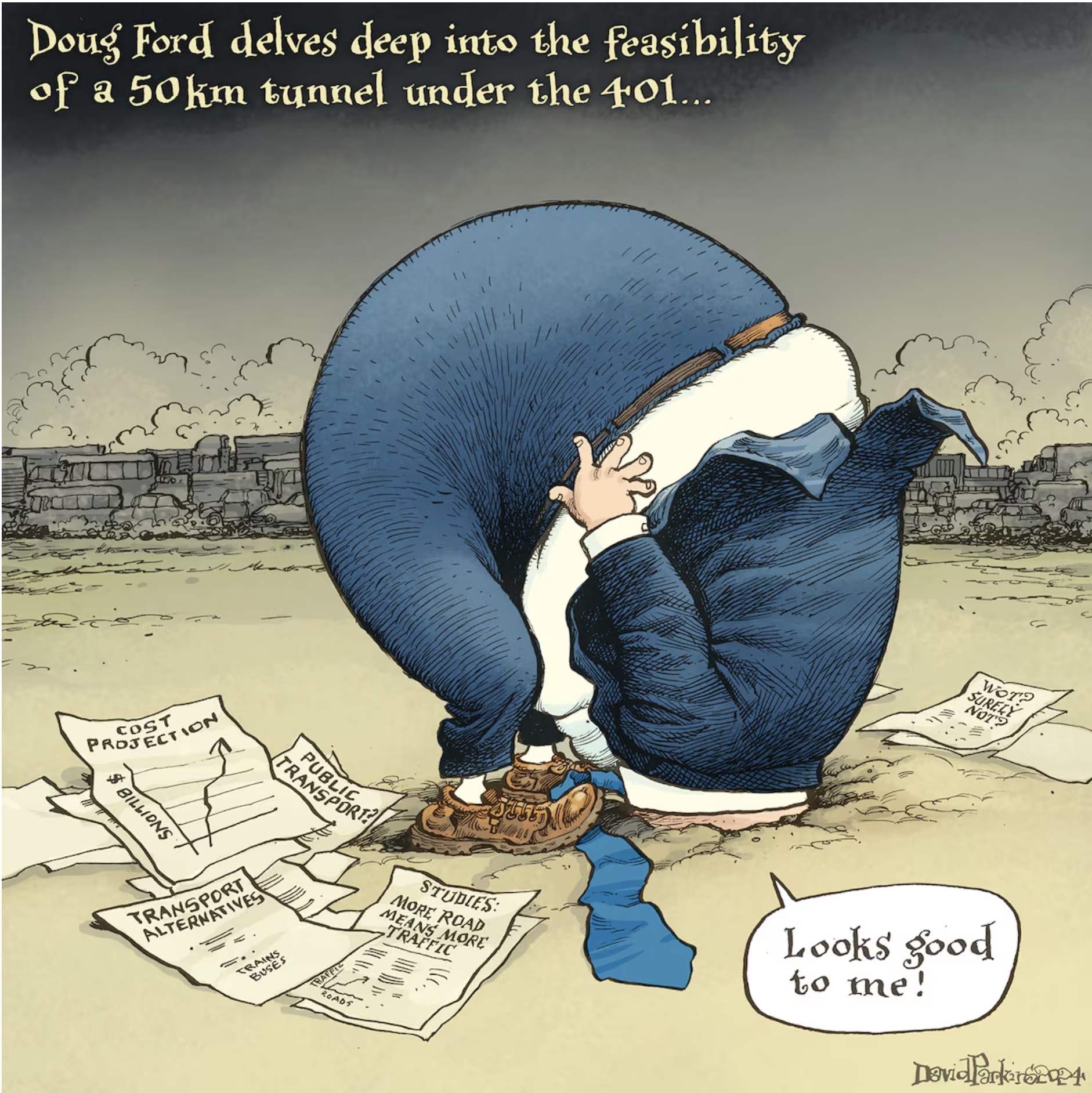
Buying Votes.
It is all part of a pattern.
Buying votes. Whatever the cost.
An Orwellian Gallagher Murphy last year praised Ford’s Finance Minister, Peter Bethlenfalvy, for “maintaining a path to a balanced Budget” while the provincial Treasury loses billions in revenue from axing licence plate fees and handing out, on the eve of the election, cheques for $200 a head for every man, woman and child in Ontario, regardless of their income.
It was a flat-rate giveaway. Financed by borrowed money.
Deficit Financing
Ford is now promising a $100 billion tunnel under the 401 but who is paying for this fantasy? With no plans to raise taxes, deficit financing is the only answer. This is what the Progressive Conservatives now believe in.
The “balanced budget” for so long a loadstar to true-blue conservatives is out the window. Now everything goes on the Provincial credit card, paying billions in interest every year. Interest payments that dwarf spending on higher education and on the entire justice system.
And all this was before the threat of Trump’s tariffs.
Don’t expect a critique of any of this from Dawn Gallaher Murphy.
That is way above her pay grade.
This email address is being protected from spambots. You need JavaScript enabled to view it.
Update at 3.30pm: From Newmarket Today: Newmarket-Aurora incumbent under fire for allegedly campaigning at charity event
MainStreet Research: Projected share of the vote in Newmarket-Aurora

- Details
- Written by Gordon Prentice
With three days to go Chris Ballard is within four percentage points of Newmarket-Aurora's PC candidate, Dawn Gallagher Murphy.
The chart below shows the projected support for the candidates as of today, on a three day rolling average.
This means Ballard is within striking distance of Gallagher Murphy.
There are easily enough NDP and Green voters out there to close the gap if they go for Ballard.
The choice here in Newmarket-Aurora is not between Doug Ford, Marit Stiles, Bonnie Crombie or Mike Schreiner.
It is between Ballard and Gallagher Murphy, denounced by her own former employees as a loathesome bully, racist and hypocrite.
This email address is being protected from spambots. You need JavaScript enabled to view it.
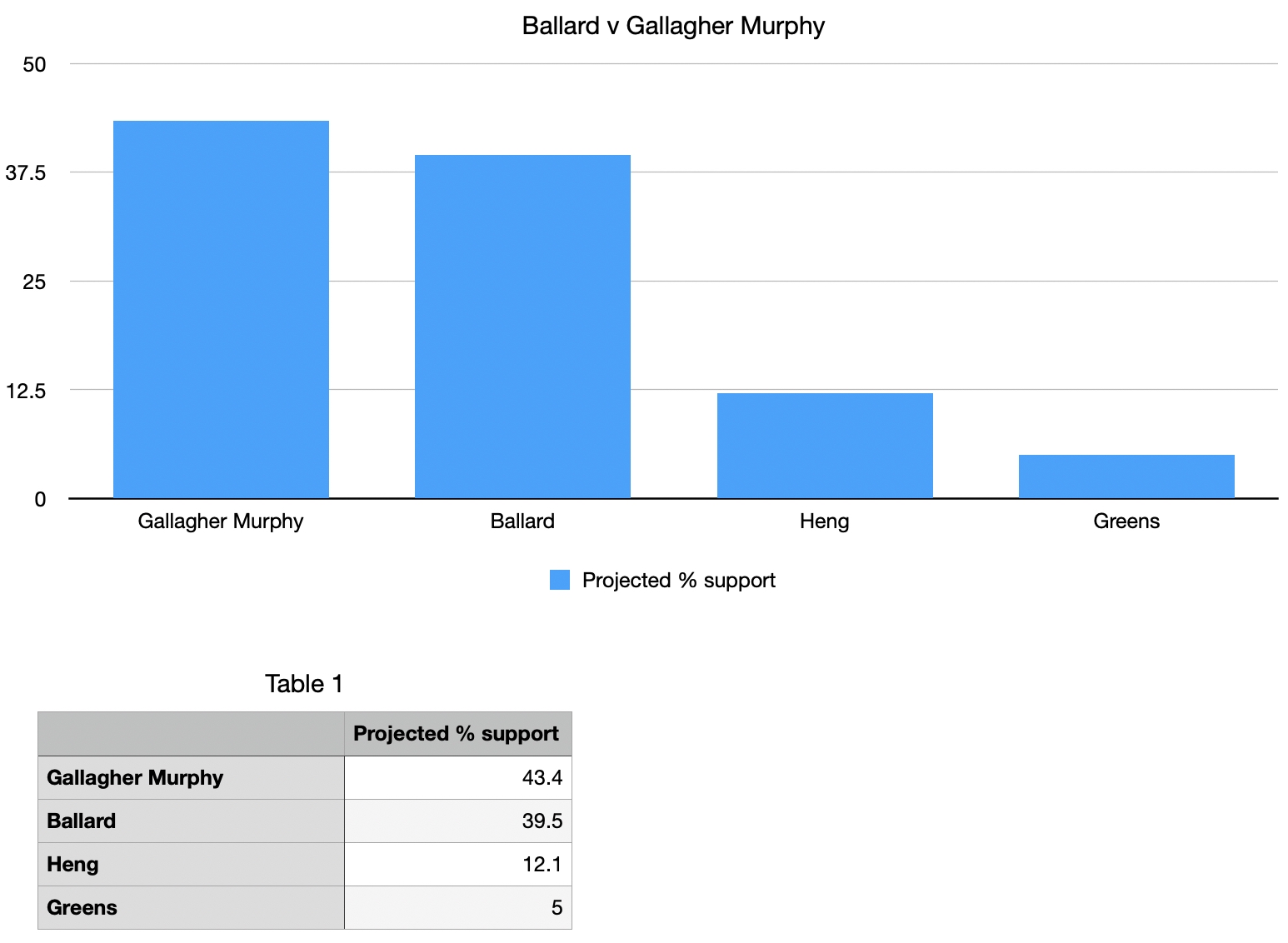
How the projected vote has shifted over the last week

Note: The margin of error for the latest Mainstreet poll is +/- 2.7% at the 95% confidence level. This means that Gallagher Murphy's support could be overstated (or, indeed, understated) by 2.7%. The reference to a 95% confidence level means we would get the same result 95 times out of 100. If Gallagher Murphy's support is overstated it follows that Ballard's support is likely to be understated. The Newmarket-Aurora poll is an extrapolation from polling carried out across the Province. There are no polls being conducted exclusively in Newmarket-Aurora.
- Details
- Written by Gordon Prentice
Seven months ago an employee at Queen’s Park emailed me with a long lists of complaints about Newmarket-Aurora’s MPP, Dawn Gallagher Murphy. I was told she is: 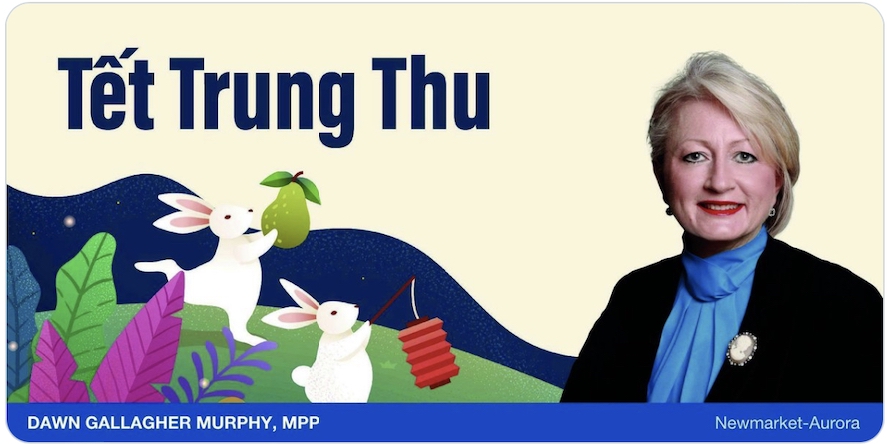
“loathed in the PC caucus.”
and
“She has nothing good to say about anyone. What she calls the MPs and mayors is not worthy of repeating. She is a horrible person.”
I was shocked and taken aback. I had never come across anything like this before.
Dyed-in-the-wool
Here was a dyed-in-the-wool conservative approaching me out of the blue, in confidence, telling me Newmarket-Aurora’s MPP was a foul-mouthed, brutal and toxic individual who, behind the smiling face, gets satisfaction from putting people down and disparaging them – even if it affects their mental health.
The person who contacted me gave details of Gallagher Murphy that only someone at the centre would have access to.
Then I heard from others who also wanted to remain anonymous, no doubt fearful of being branded a traitor to the cause. Their jobs too could be on the line.
Then came the explosive revelation from Gallagher Murphy’s office manager, Teena Bogner, that she was bringing an action against the MPP at the Ontario Board of Labour Relations for bullying and harassment. The cat was now out of the bag.
As it unfolded, the story was widely reported in the Newmarket Era and Newmarket Today. But, despite being roasted alive, the polls say Gallagher Murphy is cruising to a second victory.
There are no polls in Newmarket-Aurora 
The polling organisations take samples from across the province and extrapolate the results to individual ridings taking past election results, demographics and a million other factors into consideration.
So, could the polls be overlooking the fact that the people who know Gallagher Murphy the best – Conservatives and former employees – are the ones who are denouncing her as a tyrannical fraud?
Her only realistic challenger, Chris Ballard, is trailing second as the anti-Gallagher Murphy vote fragments. And he is running out of time to close the gap. He needs the support of people who would ordinarily vote NDP and Green.
What would persuade them to vote for Ballard?
The NDP and the Greens can’t win here. That is the unmistakeable reality.
Chris Ballard is authentic in a way that Gallagher Murphy isn’t. He has pledged to focus on big local issues such as Southlake, affordable housing and transport. He knows the climate change portfolio inside out.
Self promotion
By contrast Gallagher Murphy is a gadfly whose mission in life is self-promotion and becoming a local celebrity. Her spending on advertising and communications in 2023-24 was the 8th highest out of 124 MPPs. (The figures are from the Speaker’s Annual Report on Members’ Office and Support Staff Expenses. The figures for 2024-25 will be published in June 2025.)
Her ads are everywhere in the local press – again all funded by taxpayer dollars. 
Some of her more bizarre ads she saves for her Twitter account. In September 2023 she wished the Vietnamese community
“a healthy and successful harvest in the year ahead”.
Every demographic in Newmarket-Aurora gets courted with a boilerplate congratulatory tweet or ad. I groaned when I saw her “honouring Scottish heritage” at a Burns Dinner last month. Burns is famous enough. He doesn’t need her.
Taxpayers' Dollars paying for her ads
In the “Office Operations” category her spending is 14th highest out of 124 MPPs. She charges her “free” BBQs to “office operations” so we are paying for those as well.
In the last election campaign she spent thousands of dollars covertly providing meals for targeted demographics (ie groups whose votes she wanted) in the category “meetings hosted”.
I noticed errors in her Statement of Expenses filed with Elections Ontario after the June 2022 election. An expense of $5,228.60 was listed under “Meetings Hosted” but in the supporting Schedule 6 the figure shown for the same “Meetings Hosted” amounted to $8,228.11. 
I contacted the auditors and was told that she had categorised some food expenses incorrectly.
She said these “meetings” were not fundraising events and, as such, she could spend whatever she liked on meals for voters so long as the overall amount was under the cap for total campaign spending (which applies to all candidates). In total Gallagher Murphy spent $122,025 getting elected in 2022.
The Face behind the Mask
Gallagher Murphy’s former employees know the face behind the mask.
But what about the rest of us?
Do we let these revelations just wash over us or do we do something about it?
If you are not outraged you have not been paying attention.
This email address is being protected from spambots. You need JavaScript enabled to view it.
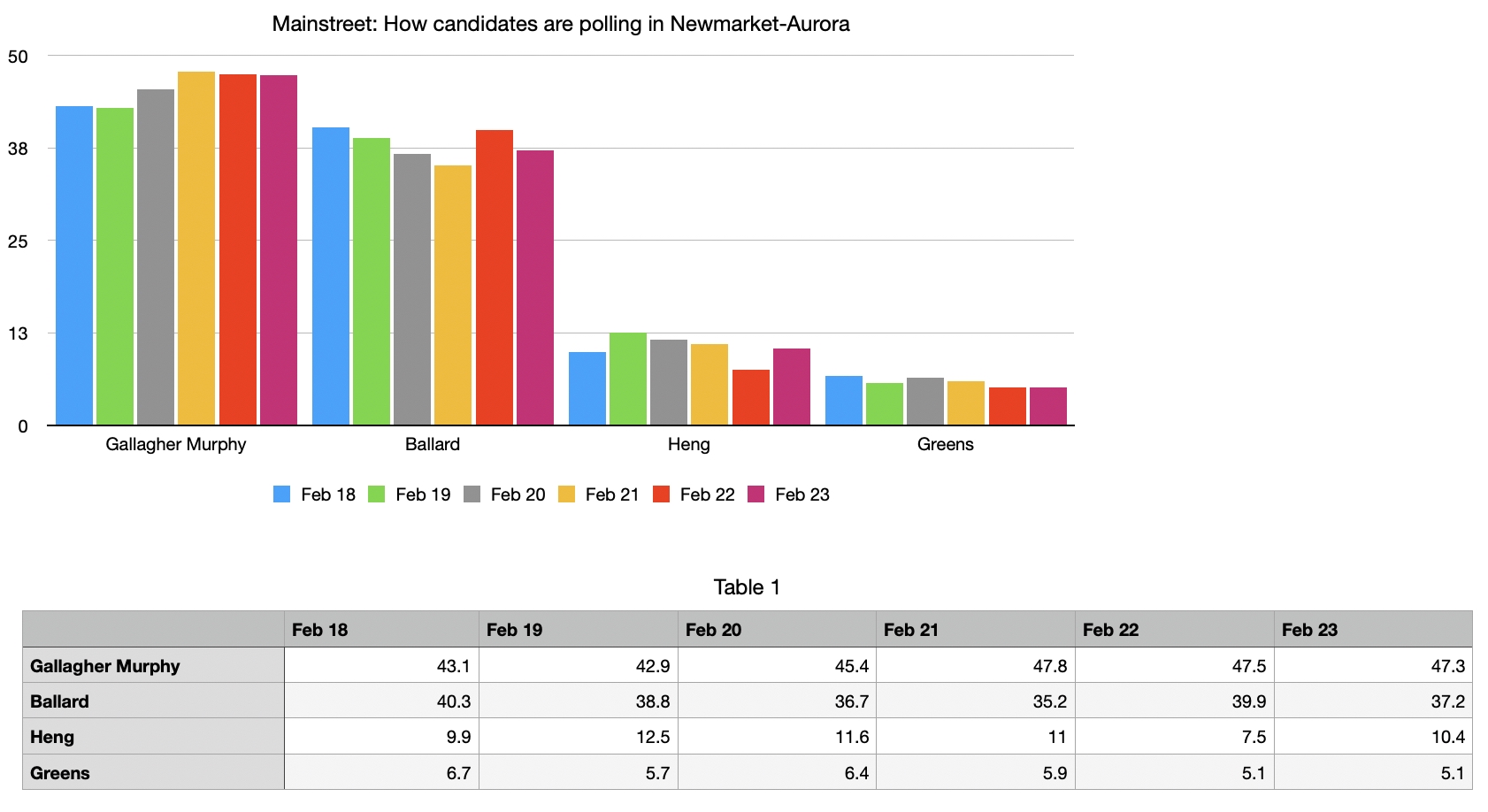
- Details
- Written by Gordon Prentice
Late last month Dawn Gallagher Murphy’s former office manager, Teena Bogner, settled her action at the Ontario Labour Relations Board against the tyrannical MPP for Newmarket-Aurora. (Photo right)
Bogner’s complaint was due to come up before the Board next Wednesday (25 February), just two days before the Provincial Election.
On 28 January 2025 I asked Teena Bogner for details of the settlement. She told me:
“The terms of a settlement agreement are private and confidential. I have not provided any information or documentation to Newmarket Today, with the exception of a statement: “The matter has been resolved to my full satisfaction”.
I am unable to comment or provide additional information.”
Plainly, the settlement involved a non-disclosure agreement.
Holding Abusers to Account
On 22 November 2023 in a debate in the Legislature on Bill 149 (Working for Workers Four Act) Gallagher Murphy said:
“…to help end workplace misconduct and hold abusers to account, our government is proposing to conduct consultations and detailed analysis on the use of non-disclosure agreements—NDAs—in the settlement of cases of workplace sexual harassment, misconduct or violence. The consultation would identify legislative options to restrict the use of NDAs while protecting the rights of victims and survivors.
Ninety-four per cent of Canadian Bar Association members recently voted in favour of discouraging the widespread use of NDAs in settlement of cases of harassment and discrimination.”
Gallagher Murphy airily continues:
“There are concerns within the legal and survivor communities about the adverse impact of using NDAs. Signing an NDA could prevent survivors from talking about their experience and protect perpetrators unjustifiably. However, prohibiting or limiting NDAs could be a disincentive to settlement, forcing more matters of this nature to litigation. Consultation with the legal community, survivors and employers would support a more complete assessment of risk and benefits.”
Protecting the Perpetrator
I agree with Gallagher Murphy. The fact that Bogner signed an NDA with her abuser, Gallagher Murphy, has prevented Bogner from speaking out. And Bogner’s silence is protecting the perpetrator.
I am pretty sure money changed hands but Bogner has zipped up her lips, saying nothing. She has told me to leave her alone.
If Gallagher Murphy paid Bogner for her silence (and that's a reasonable assumption to make) it was a smart move by the MPP. A confession of guilt would have blown a hole in Gallagher Murphy's campaign for re-election.
Proof
Gallagher Murphy is a racist bully and hypocrite – as assessed by her own former employees. All eleven of them.
The proof is staring us in the face.
No wonder Gallagher Murphy avoids election debates like the plague.
She would never survive an encounter with Chris Ballard.
This email address is being protected from spambots. You need JavaScript enabled to view it.
See also: From the Ontario Bar Association: the misuse of non-disclosure agreements
- Details
- Written by Gordon Prentice
Projections from the polling organisation Mainstreet Research continue to put the racist bully Dawn Gallagher Murphy way ahead of her main challenger Chris Ballard.
But Ballard has recovered support as the NDP and Green vote is squeezed.
Neither the NDP nor the Greens can win in Newmarket-Aurora.
The New Blue Party - to the right of Ford's PCs - will take votes from Gallagher Murphy. In the 2022 election the New Blue candidate got 1,520 votes (3.6%).
The vanity candidate Yuri Duboisky from the Moderate Party is running again. Last time he got 118 votes.
Low turnout
Gallagher Murphy will be hoping for another low turnout. The 2022 election had the lowest turnout in Ontario's history.
The Progressive Conservatives are more efficient at getting out their vote - it is older and more affluent.
And the PCs in Newmarket-Aurora do much of their campaigning under the radar such as providing free meals for targeted demographics.
In the 2022 election Dawn Gallagher Murphy splashed out an eye watering $122,025 on campaign expenses more than double the next highest spender.
This email address is being protected from spambots. You need JavaScript enabled to view it.
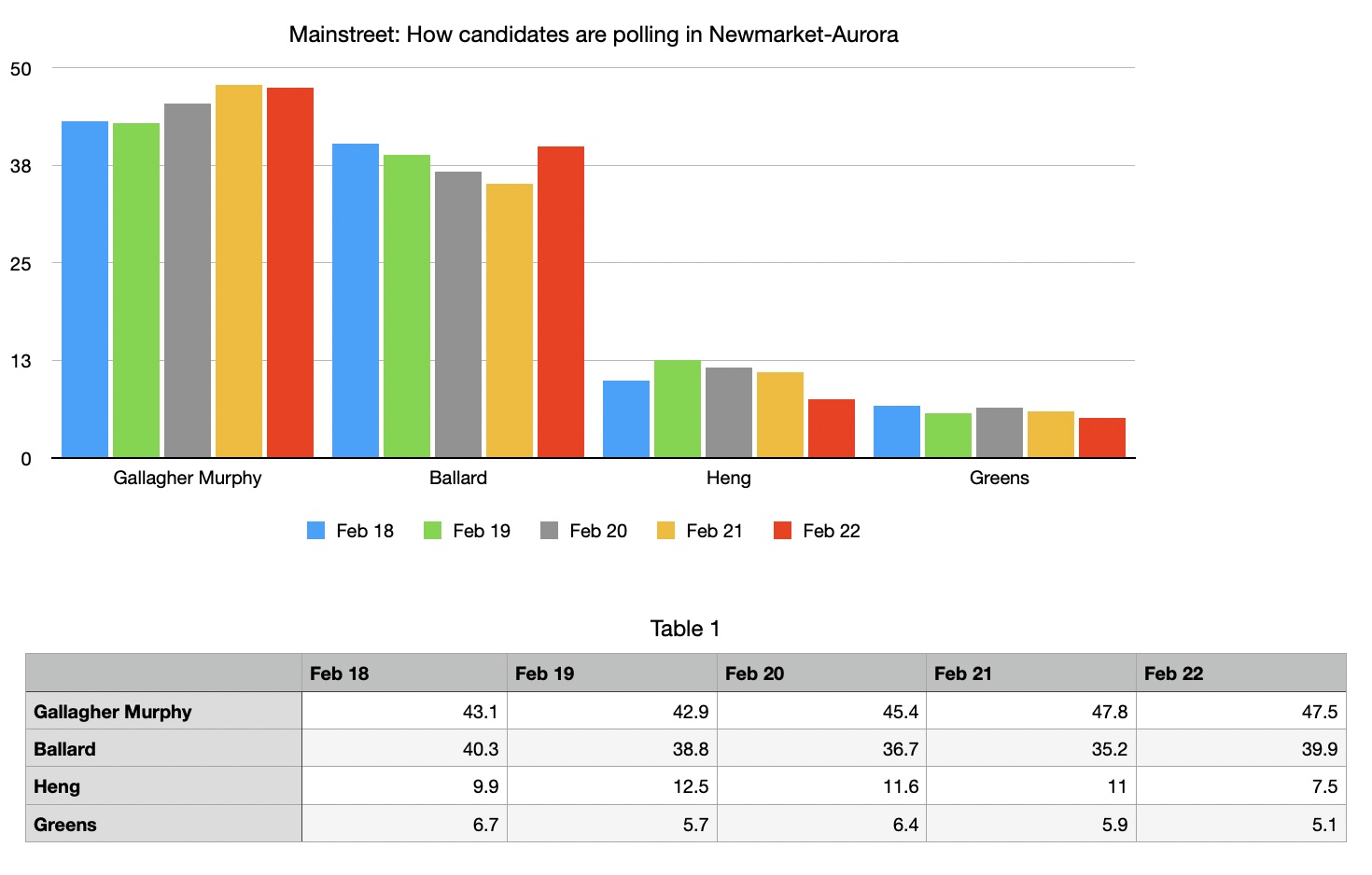
Page 10 of 286